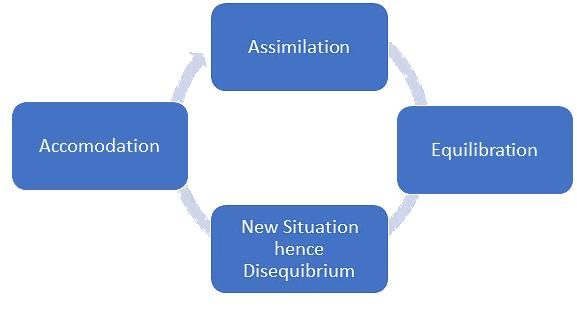CTET & State TET Exam > CTET & State TET Tests > CDP (Piaget's Theory - CTET & State TET MCQ
CDP (Piaget's Theory - CTET & State TET MCQ
Test Description
10 Questions MCQ Test - CDP (Piaget's Theory
CDP (Piaget's Theory for CTET & State TET 2025 is part of CTET & State TET preparation. The CDP (Piaget's Theory questions and answers have been prepared
according to the CTET & State TET exam syllabus.The CDP (Piaget's Theory MCQs are made for CTET & State TET 2025 Exam.
Find important definitions, questions, notes, meanings, examples, exercises, MCQs and online tests for CDP (Piaget's Theory below.
Solutions of CDP (Piaget's Theory questions in English are available as part of our course for CTET & State TET & CDP (Piaget's Theory solutions in
Hindi for CTET & State TET course.
Download more important topics, notes, lectures and mock test series for CTET & State TET Exam by signing up for free. Attempt CDP (Piaget's Theory | 10 questions in 10 minutes | Mock test for CTET & State TET preparation | Free important questions MCQ to study for CTET & State TET Exam | Download free PDF with solutions
CDP (Piaget's Theory - Question 1
Alternating or changing our existing schemes in light of new information is known as
Detailed Solution for CDP (Piaget's Theory - Question 1
CDP (Piaget's Theory - Question 2
Piaget believed that children construct their own cognitive worlds and build mental structures to adapt to it. As the child combines new information into his or her previous schemes, ___________takes place.
Detailed Solution for CDP (Piaget's Theory - Question 2
CDP (Piaget's Theory - Question 3
Arya, a three-year-old child, pretend to be another person and treat blocks that differ in size as if the longer one was a parent, and the shorter one the child, and play with them. As per Piaget, she is actively engaged in:
Detailed Solution for CDP (Piaget's Theory - Question 3
CDP (Piaget's Theory - Question 4
After seeing a cat a child says it is a dog, because the child learn that dog has 4 legs, This view is a representation of -
Detailed Solution for CDP (Piaget's Theory - Question 4
CDP (Piaget's Theory - Question 5
Around the age of 4-5 years, children are found to be asking a lot of “why” questions. For instance, “why is the sky blue?” “Why does the sun shine?” “How do we grow?” “Who was the mother when everyone was a baby?” etc. What might be the underlying motive for this behavior?
Detailed Solution for CDP (Piaget's Theory - Question 5
CDP (Piaget's Theory - Question 6
According to Piaget theory, which of the following influences one’s cognitive development?
A. Social Experiences
B. Biological Maturation
C. Language
D. Activity
E. Equilibration
Detailed Solution for CDP (Piaget's Theory - Question 6
CDP (Piaget's Theory - Question 7
Parthika demonstrates object permanence when her rattle is taken and hidden under a blanket and she
Detailed Solution for CDP (Piaget's Theory - Question 7
CDP (Piaget's Theory - Question 8
A group of children tasked with arranging a set of colored blocks from the lightest to the heaviest. Moreover, they also demonstrate mental inference when asked questions like "If Block A is lighter than Block B, and Block B is lighter than Block C, which block is the heaviest?" The children are in Piaget’s _______ stage.
Detailed Solution for CDP (Piaget's Theory - Question 8
CDP (Piaget's Theory - Question 9
A child named Yash, is given two equal-sized balls of playdough, and he agrees that they have the same amount. Then, one of the playdough balls is rolled out into a long, thin snake shape. Now, the child is asked whether the remaining ball and the flattened snake have the same amount of playdough, he disagreed. Given this context, Yash lacks-
Detailed Solution for CDP (Piaget's Theory - Question 9
CDP (Piaget's Theory - Question 10
A child starts solving the problem by using his divergent thinking, According to Jean Piaget in which stage he is-
Detailed Solution for CDP (Piaget's Theory - Question 10
Information about CDP (Piaget's Theory Page
In this test you can find the Exam questions for CDP (Piaget's Theory solved & explained in the simplest way possible.
Besides giving Questions and answers for CDP (Piaget's Theory, EduRev gives you an ample number of Online tests for practice
Download as PDF




















